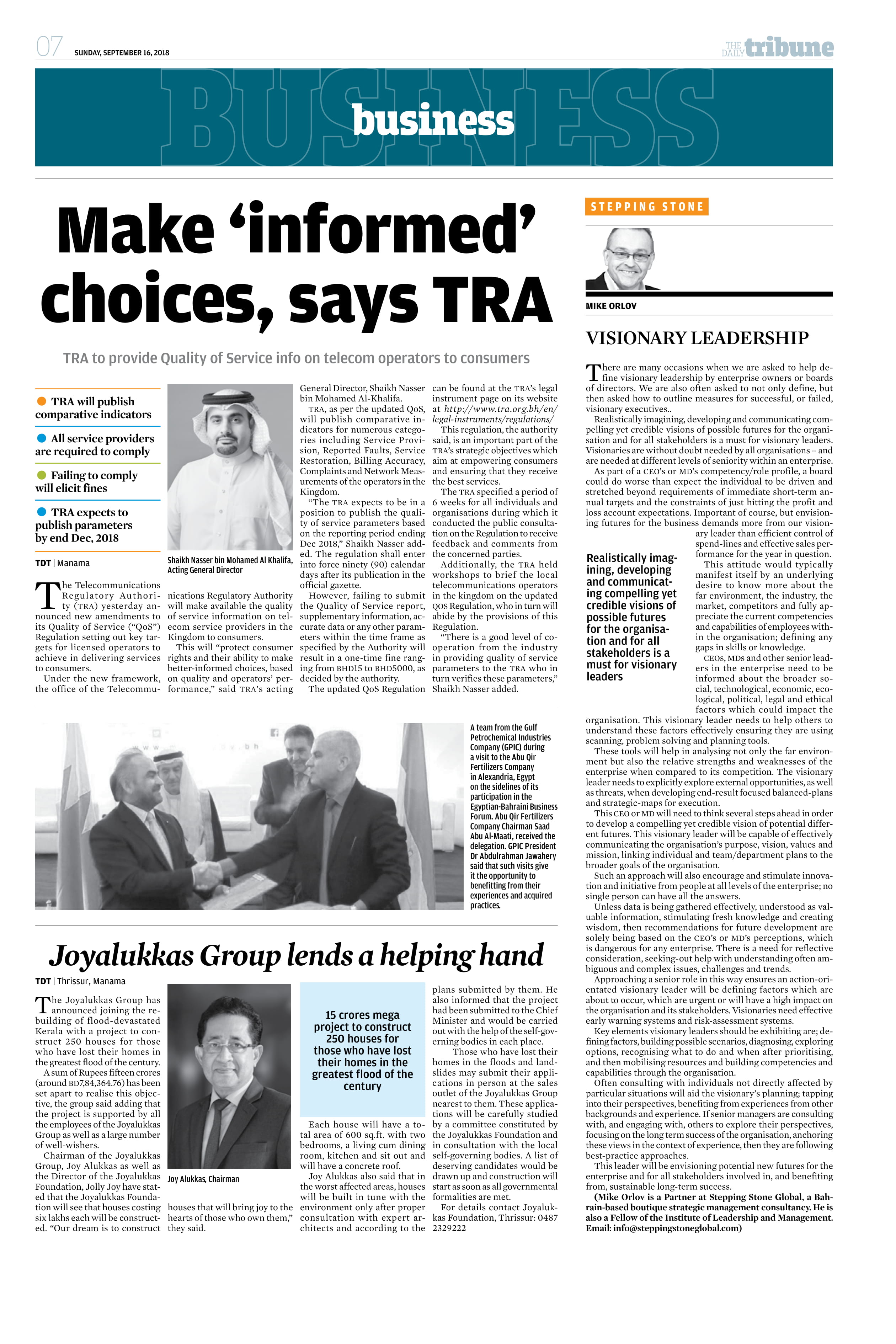VISIONARY LEADERSHIP
There are many occasions when we are asked to help define visionary leadership by enterprise owners or boards of directors. We are also often asked to not only define, but then asked how to outline measures for successful, or failed, visionary executives..
Realistically imagining, developing and communicating compelling yet credible visions of possible futures for the organisation and for all stakeholders is a must for visionary leaders. Visionaries are without doubt needed by all organisations – and are needed at different levels of seniority within an enterprise.
As part of a CEO’s or MD’s competency/role profile, a board could do worse than expect the individual to be driven and stretched beyond requirements of immediate short-term annual targets and the constraints of just hitting the profit and loss account expectations. Important of course, but envisioning futures for the business demands more from our visionary leader than efficient control of spend-lines and effective sales performance for the year in question.
This attitude would typically manifest itself by an underlying desire to know more about the far environment, the industry, the market, competitors and fully appreciate the current competencies and capabilities of employees within the organisation; defining any gaps in skills or knowledge.
CEOs, MDs and other senior leaders in the enterprise need to be informed about the broader social, technological, economic, ecological, political, legal and ethical factors which could impact the organisation. This visionary leader needs to help others to understand these factors effectively ensuring they are using scanning, problem solving and planning tools.
These tools will help in analysing not only the far environment but also the relative strengths and weaknesses of the enterprise when compared to its competition. The visionary leader needs to explicitly explore external opportunities, as well as threats, when developing end-result focused balanced-plans and strategic-maps for execution.
This CEO or MD will need to think several steps ahead in order to develop a compelling yet credible vision of potential different futures. This visionary leader will be capable of effectively communicating the organisation’s purpose, vision, values and mission, linking individual and team/department plans to the broader goals of the organisation.
Such an approach will also encourage and stimulate innovation and initiative from people at all levels of the enterprise; no single person can have all the answers.
Unless data is being gathered effectively, understood as valuable information, stimulating fresh knowledge and creating wisdom, then recommendations for future development are solely being based on the CEO’s or MD’s perceptions, which is dangerous for any enterprise. There is a need for reflective consideration, seeking-out help with understanding often ambiguous and complex issues, challenges and trends.
Approaching a senior role in this way ensures an action-orientated visionary leader will be defining factors which are about to occur, which are urgent or will have a high impact on the organisation and its stakeholders. Visionaries need effective early warning systems and risk-assessment systems.
Key elements visionary leaders should be exhibiting are; defining factors, building possible scenarios, diagnosing, exploring options, recognising what to do and when after prioritising, and then mobilising resources and building competencies and capabilities through the organisation.
Often consulting with individuals not directly affected by particular situations will aid the visionary’s planning; tapping into their perspectives, benefiting from experiences from other backgrounds and experience. If senior managers are consulting with, and engaging with, others to explore their perspectives, focusing on the long term success of the organisation, anchoring these views in the context of experience, then they are following best-practice approaches.
This leader will be envisioning potential new futures for the enterprise and for all stakeholders involved in, and benefiting from, sustainable long-term success.

